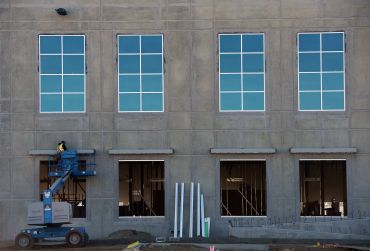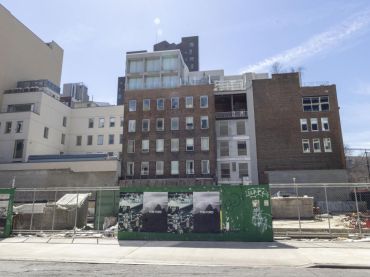Los Angeles Ends 2022 With a Vacancy Problem
Rising challenges threaten to further hinder market recoveries
By Greg Cornfield December 30, 2022 5:25 pm
reprints
Los Angeles will start 2023 with a growing list of challenges that threaten to further restrict the economic recovery moving forward.
The office vacancy rate ticked up again in the fourth quarter, while apartment rents fell slightly, according to data released Friday by NAI Capital. Also, higher interest rates have stalled investment across all asset classes.
L.A. County’s commercial real estate market will face ongoing pressures as the economy adjusts to changes in supply, demand, and pricing heading into 2023, NAI’s report read. As the Federal Reserve continues to raise the interest rate, the challenges in borrowing money cause reduced spending, cutting into real estate values.
“The Federal Reserve in its effort to tackle inflation by raising the interest rate is putting the brakes on the economy,” J.C. Casillas, managing director at NAI Capital, told Commercial Observer. “Commercial real estate is beginning to bear the impact of that policy with market trends showing rising vacancy and cooling rent — except for industrial rent which has remained strong. Each property type will undergo its opportunities and challenges heading into the new year.”
Office
Big office tenants are cutting excess space and reevaluating overall workspace needs, but NAI still maintains the sector is on a “slow path to recovery.” Landlords have posted declining occupancy rates due a larger flight to quality and to major cutbacks in the tech and media industries, which have for years been major drivers in L.A.
Demand for office space continued to decline as the vacancy rate climbed 110 basis points from last year to 15.2 percent in the final quarter of 2022, according to NAI Capital. The average asking rent was down 2 cents from the start of the year at $3.48 per square foot.
“Landlords will get creative in luring tenants to fill vacant space, offering valuable concessions like flexible lease terms, free rent, and tenant improvement allowances,” the report said.
Multifamily
After a jump in construction, multifamily vacancy moved up slightly by 10 basis points year over year to 3.7 percent in the fourth quarter. The average asking rent also fell slightly for the first time since the pandemic shutdown, but it is still 3.2 percent higher than last year at $2,127 per month, according to NAI.
“The shift in market conditions and demand for multifamily will continue into 2023,” the report said. “The rate of growth for multifamily units will be impacted by rising interest rates, inflated construction costs and a slowing economy — seeking stability.”
Retail
With some retailers pivoting back to brick and mortar, retail vacancy remained flat from a year ago at 5.4 percent in the fourth quarter, while the average asking rent grew over the same timeframe to $3.03 per square foot.
“Retail will continue to go through its transformation, with most retailers occupying less physical selling space in stores and more warehouse space for ecommerce, outdoor restaurant seating and curbside pickup — which has become permanent,” according to NAI.
Gregory Cornfield can be reached at gcornfield@commercialobserver.com.


